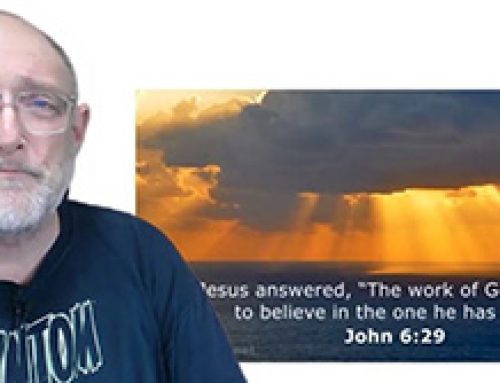Rather than do his usual Gospel Reflection, Fr Paul will, again, today share information in relation to our Easter celebrations and then invite you to come and experience our Easter celebrations and our Easter joy as we celebrate that Christ is risen.As he did on Holy Thursday and Good Friday, Fr Paul takes a little time to explain some of the special things that take place during our Easter ceremonies.Explanation & History The feast of the Resurrection of Christ is the greatest and oldest in the Church. Its importance has been emphasised liturgically by the long preparation for it, which we call Lent and Holy Week. The word ‘Alleluia’, a liturgical expression of praise, is now used again to express the Easter joy – Christ is risen. In the ancient church the people wanting to become catholic were baptised and they received holy communion on Easter Sunday after keeping vigil all Saturday night. The origin of the name ‘Easter’ is uncertain. However, it seems clear that, like Christmas, the Christian feast of Easter superseded an old pagan festival. The Easter Vigil Ceremony This is the principal celebration of Easter. It is traditionally observed during the night of Holy Saturday. There is clear evidence from the 2nd Century of a combined Good Friday/Easter ceremony and in the 4th Century that the two were separated and the Vigil ceremony developed, having the resurrection of Christ as its centre and reason for celebration. The basic pattern of the ceremony has remained virtually unchanged throughout the ages. The following details how we celebrate the Easter Vigil today: The Service of Light This part of the ceremony commemorates the resurrection of Christ – light of the world. In this part of the ceremony a fire is used to light the Easter (Paschal) Candle. The fire symbolises purification, newness and light. The candle is then prepared. It has on it a cross and the new year eg, 2023. At the top, it has the Greek letters Alpha (the beginning) and at the bottom it has the Omega (the end) symbolising to us that Jesus is the beginning and the end. Then five grains of incense are inserted into the candle to signify the wounds of Christ (each hand, the feet, the crown of thorns and the spear wound to the Lord’s side). With the candle prepared and lit the priest moves through the church declaring that ‘Christ is our light’. The people’s candles are lit from the Paschal Candle. Then the Easter Proclamation, the Exsultet is sung expressing our joy that Christ is risen, and we have been saved. The Liturgy of the Word The church meditates on all the wonderful things God has done for his people from the beginning of time. There are nine readings that are available for this part of the ceremony: The Old Testament ones are:
- One which tells the story of creation (Genesis 1:1-2;2)
- One which tells of Abraham’s sacrifice of Isaac, his only son (Genesis 22:1-18)
- One which tells of the exodus through the Red Sea (Exodus 14:15-15:1)
- And then four that tell of the prophecies of redemption (Isaiah 54:5-14. Isaiah 55:1-11. Baruch 3:9-15, 32-4:4. Ezekiel 36:16-28)
The New Testament reading tells of Christ’s resurrection and our baptism (Rom 6:3-11) and the Gospel is one of the accounts of the resurrection. After the Liturgy of the Word comes the Liturgy of Baptism. Liturgy of Baptism New members of the church are welcomed by being baptised and confirmed and existing members of the church call to mind their own baptism by renewing their baptismal promises. This is done after the Litany and the blessing of the water. The water is used because it symbolises the fact that we need water to live and that it we use it to wash ourselves clean. It is the same with Christ. We celebrate that he died and rose from the dead so that we might have life and be cleansed of our sins. Liturgy of the Eucharist (Communion) The whole church is then called to the table which the Lord prepared for his people through his death and resurrection. Fr Paul concludes his brief summary of the Easter Vigil celebrations and renews his invitation to attend one of our Easter Masses (the 6pm Vigil on Saturday at St Agnes’ Church in Hay Street Port Macquarie; then on Sunday the Masses at St Agnes’ are 7.30 and 9am; Our Lady Star of the Sea in Lake Cathie at 8am; and St Francis of Assisi Chapel in Lochinvar Place at 9.30am). Christ is Risen! Alleluia! Alleluia! Please note, there is no 5pm mass on Sunday Evening.






Leave A Comment